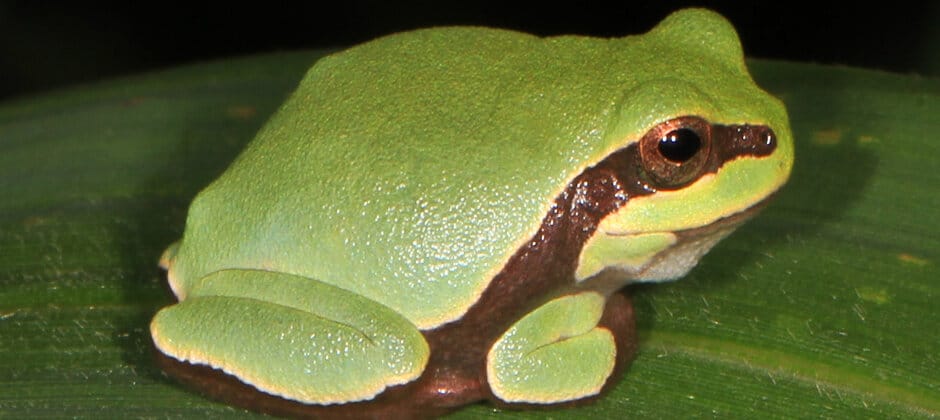Share this article
Genetics reveal great diversity among treefrog populations
Pine barrens treefrog populations are distinct enough across their range that frogs in different areas may need to be managed as separate populations.
“There don’t seem to be any individuals going into and out of these populations,” said Kenneth Oswald, an assistant professor in biology at Ohio Northern University and the lead author of a study published recently in the Journal of Herpetology looking at the genetics of the species.
Pine barrens treefrogs (Hyla andersonii) live near wetland areas, laying their eggs in the water and moving into the trees as adults. They occur in three locations: one in New Jersey, one in the Carolinas and one in the Florida Panhandle and Alabama. But between these locations are huge gaps where none are found — including all of Georgia, Virginia, Maryland and Delaware. The population in Florida and Alabama was thought to be much smaller until the early 1980s, when discovery of further individuals prompted the U.S. Fish and Wildlife Service to remove the amphibians from the endangered species list.
All three populations have lost many of the wetlands they rely on, often due to development. Pine barrens treefrogs rely on a very specific acidity level in the water where they lay their eggs, which is vulnerable to chemical pollution.
Oswald and his co-authors wanted to see if some of these populations might be more vulnerable than others. They took toe clippings from 72 treefrogs, split about evenly between the three locations, and sequenced their DNA. What they found indicated more differences than their sensitivity to the environment. Each was genetically very different from one another, indicating they may have split evolutionarily millions of years ago.
The Florida and New Jersey populations were particularly different. Even populations in North and South Carolina differed, despite being geographically close. “We saw pretty substantial genetic divergence among these populations,” Oswald said.
It’s hard to determine when these populations diverged, Oswald said, but they are different enough that they likely separated sometime before the last Ice Age, when secondary impacts from moving glaciers may have caused the populations to fragment.
“If these frogs are deemed as habitat specialists, like all the biology points to, then their history may have had to be the history of that very specific habitat,” Oswald said.
The findings have implications for management, he said. Some movement occurs between North and South Carolina, but there is almost no movement in or out of the populations in either New Jersey or Florida and Alabama.
“Essentially what that says is that you might want to manage each population independently,” Oswald said.
Header Image:
Pine barrens treefrog populations diverged significantly from each other since at least the last Ice Age.
Credit: Judy Gallagher








